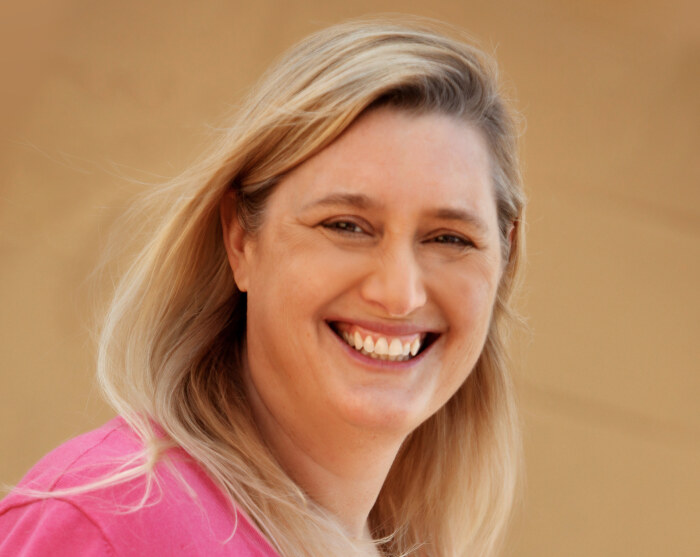Jonna Higgins-Freese: Private schools choose their students. They have in the past, and they will in the future.
I’m slightly obsessed with George Lakoff, his cognitive science research about the metaphors we think with, and his recommendations for Democratic messaging (which we have mostly ignored; the national party fired him in 2006).
So you can imagine how delighted I’ve been to see Democrats finally adopting his suggestion to talk more about “the public.”
“Public Money in Public Schools” signs have been appearing all over my community for more than a year, and they have exactly the right message.
Unfortunately, I think Democrats have missed the boat on reframing some of the Republican voucher propaganda. We need to say loudly, clearly, and consistently that Governor Kim Reynolds’ voucher plan, which Iowa lawmakers rushed to enact this week, is a “Schools Choose” bill.
Private schools choose their students. They have in the past, and they will in the future. Three examples of what we heard when we inquired about enrolling our children:
- Summit Academy told us, “We don’t take students with IEP’s.”
- St. Matthews Catholic School in Cedar Rapids said, “We don’t take students with IEP’s.”
- Scattergood Friends School first called to tell us that our kids with IEPs would be admitted, both at full tuition, and then called to say never mind, they weren’t admitted at all.
These are kids who in recent days have been described as “brilliant” and “the very best of what our school represents” by public school teachers and administrators.
But that’s irrelevant. Because public schools take students whether they are brilliant or not, whether they are the best of what the school represents or profoundly traumatized and in need of tremendous support and care.
Public schools provide everyone a free and appropriate public education. Private schools choose. That’s the message.
Jonna Higgins-Freese is the author of Democracy Diary on Substack. She has lived in Iowa for most of her life and enjoyed seventeen years of excellent public education. Her writing has appeared in publications including Grist, The Attached Parent, and The Wapsipinicon Almanac. She is currently seeking a publisher for a novel with the working title Free from Fear, which tells the story of Frances Perkins and the creation of the Social Security Act.
Top photo of Jonna Higgins-Freese provided by the author and published with permission.


2 Comments
Good point, but . . .
I think this is a feature, not a bug, in the system that promotes vouchers and that motivates some parents to move their kids out of public schools. You know, “My kids go to Special Private School rather than Rowdy public school. At Special Private the kids are all cut from the same cloth, if you know what I mean.”
Back when I went to school before the ESEA, there were no IEPs. Those kids were bussed elsewhere.
I have been wondering about the evidence for my theory. How many private schools were there before Brown v Board of Education or before ESEA compared to how many there are now? What other evidence might there be? . . . . Bueller?
iowavoter Thu 26 Jan 10:20 AM
A feature of Christian Nationalism
This is absolutely a feature, not a bug. _The Power Worshippers: Inside the Dangerous Rise of Religious Nationalism_ has an excellent chapter on this. The main purpose of these laws is to retain education as a “property of whiteness” by separating white students from students of color after Brown v. Board. Before that, white nationalists opposed private schools b/c they were mostly Catholic, which the KKK adamantly opposed. Since Brown v. Board, there’s been a realignment in which the pressure from Christian/white nationalists has been to move white students to public schools at taxpayer expense (remember that before Brown v. Board, there were explicitly “separate but equal” funding systems in the south for the black vs. white public school systems). Now that is maintained (with some studies showing greater school segregation than before Brown v. Board) by funding schools with local property taxes and systemically preventing accumulation of wealth in black neighborhoods (through redlining, etc.)
In addition, far from separation of church and state, we’re looking at state subsidies for usually church-based private schools. They don’t pay taxes, but they eat from the state trough. They’re potluck freeloaders, not bringing anything but taking home a huge box of leftovers at the end. I thought about including that metaphor, but Lakoff has a huge amount of research on the power and necessity of talking about public money for public schools (and the concept of “the public” generally) and I wanted to focus on the “schools choose” message here.
Students with disabilities have only been mainstreamed in public schooling and entitled to a free and appropriate public education in the least restrictive environment since the passage of IDEA in 1992.
One of the things that most enrages me personally is that the Christian right would adamantly oppose a mother’s decision not to give birth to a disabled child (to the extent that that could be known in advance) while simultaneously refusing to educate those children themselves. If I were a Christian Nationalist, it would certainly give me pause that I’m a welcome member of the community only so long as my children are able-bodied. But we all know that injustice anywhere is a threat to justice everywhere, while living with a huge amount of cognitive dissonance.
Jonna Higgins-Freese Sat 28 Jan 10:35 AM